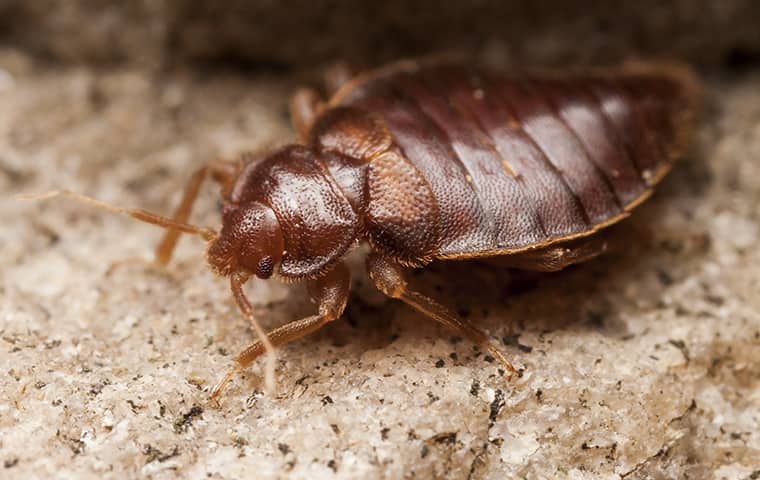Bed Bugs are now found everywhere; hotels (cheap ones and luxurious ones), movie theaters, hospitals, public transportation (including airplanes), daycares – anywhere people congregate for pleasure or work. And bed bugs are experts at hitchhiking onto clothing, shoes, suitcases, backpacks, etc. and eventually finding residence in our beds or favorite chair.
Anyone who has attempted to eradicate a bed bug infestation on their own, armed with the latest miracle cure found over the trusty internet, knows how nearly impossible it is to become free of the blood-sucking pests.
The fact is: you, or someone you know, will probably experience one or more bed bug situations in the future. There are ways for you to prepare for such a time that will lessen the severity of the infestation and will make a treatment by a bed bug expert more effective and less costly.

- Properly identify the existence of bed bugs. Not all bite symptoms are caused by bed bugs.
- Keep the bedrooms and sitting rooms free of clutter. Vacuum frequently.
- Place bed bug approved encasements on all mattresses and box springs.
- Use Climb-Up monitors under all bed and headboard support legs.
- Move the entire bed and headboard away from walls and furniture. Avoid using bed skirts.
- Launder bedding often while keeping a sharp eye out for insects and bloodstains on linens and mattress/ box spring seams.
- Seal baseboard and switch cover seams with caulking. Dust lightly around the baseboard, headboard, mattress seams, and under furniture with a silica-based powder. Diatomaceous earth does not last very long in our humid South Texas environment.
- Call a professional to inspect for bed bugs if someone is waking up with small, reddish welts that they didn’t have before going to bed. Place sticky glue traps in rooms to identify if fleas may instead be the culprit.
Bed Bug treatments are performed using heat or freezing cold, or with labeled chemicals – or combinations of the three. Heating equipment is used to warm entire rooms to air temperatures over 120 degrees for several hours. This treatment method is the most desirable in situations where the infestation has grown so large that bed bugs are found throughout the home. It is also the most costly since the equipment is expensive and many safety issues have to be addressed by well-trained professionals.
Liquid CO2 injectors can be used to treat the bed structure by directing freezing cold gas into the seams and cracks of the bed frame, mattress, and box spring. This has the advantage of keeping pesticides off the bed, however, other articles in the room may not get treated because the cold temperature may damage them. Again, the equipment is expensive and there is no residual protection.
Chemical pesticides are the least expensive and they have the advantage of providing continuous protection over several months. The obvious disadvantage is the chemicals can leave an odor for a short period of time, and exposure to the skin of persons and pets is possible. If the treatment is done right, the amount of exposure should be minimal and harmless.
Family Pest Control uses a combination of steam, heat, and chemicals to provide complete elimination of bedbugs from individual rooms. Treatment costs run from $150 to $550, plus we offer bed encasements and bed bug traps and monitors. We also offer quarterly (every 3 months) bed bug prevention treatments for customers who feel they are at risk of bringing in the pests from their travels, work, or play.
Preparing a room for a Bed Bug Treatment requires a great deal of work on our part, and by the homeowner. All clothing, shoes, stuffed animals, and curtains must be bagged, removed, and treated separately by washing and/or drying the articles in a commercial dryer at high heat for 20 minutes. Electronics and small collectibles need to be treated with fumigants. If the room has too many articles and small furniture that needs to be treated, we can instead erect a Heat Enclosure in the middle of the room and place the items inside to expose them to 120-degree temperatures for 6 hours.
Bed Bug Facts
- Females lay several eggs per day. Eggs hatch in one week.
- Eggs are about the size of a spec of dust and are clear in color.
- Hatchlings molt 5 times before becoming adults – they require a blood meal between each molting stage.
- Adults are reddish, about the size of a tick, and crawl quickly but do not fly.
- Bed Bugs probably evolved from Bat Bugs, becoming human feeders on the primitive cave people living in Eurasia, tens of thousands of years ago.
- High heat (1200 F) kills adult bed bugs and their eggs. Clothes dryers, or even putting articles in black plastic bags and then placing them outside in the direct sun, can accomplish this.
- Insect repellants do not work well for preventing bed bug bites.
- Bed bugs only feed on human and pet blood – not on food debris or household filth.
- Aerosol bombs are not effective and may be dangerous.
- Discarded beds and used furniture are often sources for introducing bed bugs into the home.
- Moderately infested beds do not need to be discarded, rather cover the mattress and box spring with approved encasements – can be purchased online.
- Thorough, proper chemical treatments are effective at eliminating bed bugs.
